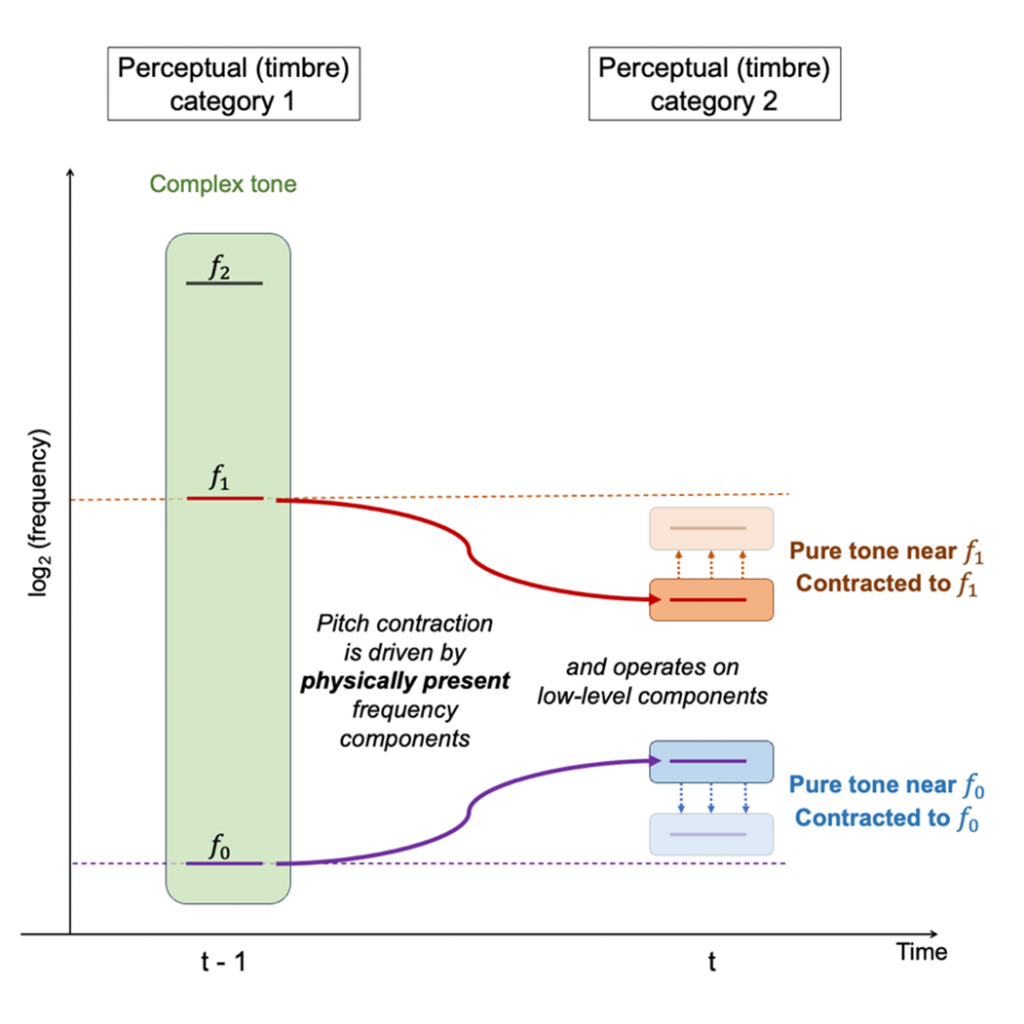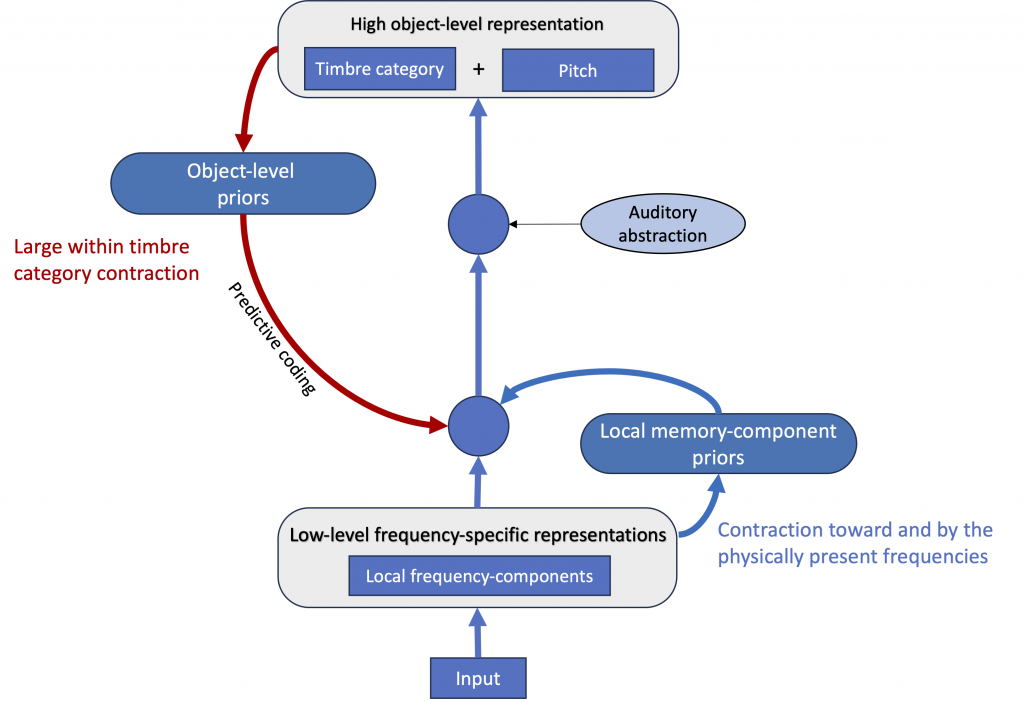Recent sensory events form perceptual priors that express our implicit expectations and bias our immediate percept, affecting both high- and low-level processing stages. Do these priors operate top-down and thereby bias low-level features toward recently experienced objects (predictive-coding hypothesis), or do priors operate bottom-up and thereby bias low-level features toward low-level representations of recently experienced objects (local memory circuits hypothesis)?
To determine which of these mechanisms underlies the contraction bias of low-level features toward recent perceptual priors in auditory perception, we used, in a 2-tone pitch discrimination task, the “missing fundamental illusion”, which enables the dissociation of low-level components from the high-level pitch. Surprisingly, pure tones were not biased toward previously perceived complex tones’ pitch when the fundamental was missing, but rather toward the physically present harmonics. This result reveals the existence of a bottom-up mechanism, where low-level memory components contribute to perceptual priors and operate independently of recent high-level percepts. This contrasts with the predictions of the predictive-coding hypothesis, which postulates that predictions are generated at high perceptual levels and operate top-down on low-level representations of current stimuli.
In brief, we demonstrate in this study the important bottom-up contribution of low-level memory components to perceptual priors. We posit that this contribution may stabilize the perceptual organization and underlie continuity between similar low-level features belonging to different object categories in the auditory modality.

Figure 1: Schematic illustration of the proposed mechanism underlying pitch contraction across timbre categories (complex or pure tones).
Low-level representations of recent stimuli (exemplified by the frequency components f0, f1, f2 of a complex tone) form local priors that operate bottom-up on low-level features of the current stimuli (exemplified by pure tones near f0, or near f1).

Figure 2: Chart of the proposed model that captures both top-down and bottom-up contributions to auditory perceptual priors.
Low-level frequency-specific representations of recent auditory stimuli form priors that operate bottom-up (blue) on low-level features of the current stimuli, independent of high-level predictions. In addition, pitch contraction appears to be larger within than across timbre categories, indicating a top-down contribution (red), driven by object-level priors.


